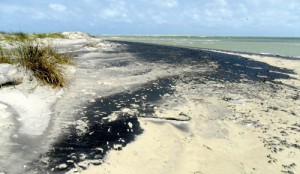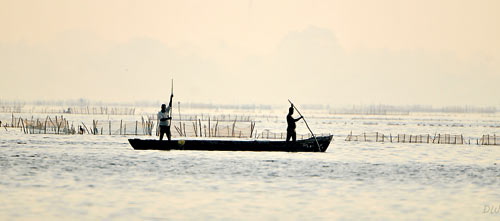Will conservation boom in the north?
The Northern Province of Sri Lanka has a rich biodiversity of fauna and flora. Its various fauna species include elephant, leopard, bear and crocodile. Some varieties of flora are exclusive to the Province. Famous for birds, the region is the main entry point for migratory species.
The Province has a number of coastal and offshore habitats such as mangroves, sea grass beds, lagoons and estuaries, salt marshes, sand dunes and beaches, coral reefs, mud flats and isolated islands that function as critical habitats for marine mammals, birds and sea birds. In the Northern seas, whales, including blue whales, turtles, dolphins, dugongs, sharks and other sea species can be found.
However, the region is yet to be fully explored in terms of conservation or tourism. The Government must declare its proposed wildlife reserves soon before these get exploited for commercial gain by unscrupulous business interests or other human interventions.
Since the Fauna and Flora Protection Ordinance No. 2 of 1937 was enacted, the Department of Wildlife Conservation (DWC) has been declaring wildlife reserves (as national parks, wildlife sanctuaries, jungle corridors) under its mandatory power. This Ordinance was amended several times, lastly in 2009.
The only seven wildlife sanctuaries declared in the Northern Province are the Madhu Road (1968), Chundikulam (1938), Giant Tank (1954), Vankalai (2008), Vavunikulam Tank (in 1963), Paraithivu (1973), and Kokkilai (1951) wildlife sanctuaries.
Since 1973, the DWC was able to declare only one sanctuary for the Province (Vankalai in 2008). The war prevented the department from carrying out conservation in conflict-affected areas including the North. But with the support of security forces and demining organizations, the DWC was able to save some wild animals. Elephants, particularly, were caught in landmines and leopards in booby traps. There were heavy battles in and out of Wilpattu national park near the Northern Province. Some areas of Wilpattu are still suspected to be mined.
After the war’s end, the DWC with the support of United Nations Development Project (UNDP) and United Nations Environment Project (UNEP) did an ‘Integrated Strategic Environmental Assessment’ (ISEA) for the districts of Jaffna, Mullaitivu, Kilinochchi and Mannar. The report suggested that three wildlife sanctuaries be upgraded to national park status. It also recommended two new national parks, five jungle corridors and five wildlife sanctuaries. It said the Vavunikulam wildlife sanctuary needed to be expanded by adding adjoining forest areas and removing human settlements.

Adam’s Bridge
The DWC is currently mapping out boundaries for national parks, wildlife sanctuaries and jungle corridors. Once this is done, a draft proposal will be sent to the Legal Draftsman for review; to Cabinet for approval; and then to parliament.
The three sanctuaries identified for upgrading as national parks are:
–Chundikulam: Located in the districts of Killinochchi, Mullaitivu and Jaffna, this 11,149ha wildlife sanctuary includes part of a lagoon. There is rich biodiversity in the lagoon, vast areas of mangroves and varieties of dry zone flora. The area is home to leopard, sloth bear and deer. It is famous for birds, being a migrant birds’ gateway into the country. The ISEA proposed that Chundikulam be upgraded to 19,565.33ha by adding nearby forests.
–Madhu Road: Located in the Mannar, Mullaitivu and Vavuniya districts. At 26,677ha, it is the largest sanctuary in the province. It has large numbers of elephant, leopard, bear, deer and water buffalo, among other fauna. The world famous Madhu Church is located within. The ISEA recommends that it be upgraded to 63,067.39ha.
–Paraithivu Island: Located in the Jaffna district, its size is 19ha. The island is also a gateway for migratory birds. It has diverse mangroves and other flora and is currently uninhabited by humans.
The two proposed national parks are:
–Part of Delft Island: Located in Jaffna district, it is one of the largest islands in the country. Part of it has been identified in the ISEA to be declared as a national park of an extent of 1,846ha. The island is famed for its wild horses. It routinely faces severe drought as it is located in the dry zone.

Jaffna lagoon
–Adam’s Bridge: Located in the district of Mannara, the 30km sand stretch goes up to Rameswaram in India. Species like dolphin, dugong and turtle live in the sea. Various fish and sea grasses thrive in shallow waters. The Indian side has already been declared as Gulf of Mannar National Park. The ISEA proposed an area of 18,990ha for this national park. When Sri Lanka designates this as a national park, it will be the country’s only trans-boundary reserve.
The ISEA calls for the declaration of five wildlife sanctuaries. These areas are diverse in fauna and flora. They include lagoons with large areas of mangroves and wetlands. They are home to local and migratory birds. Protecting these environments will benefit conservation and minimize drought in the Jaffna Peninsula. Irresponsible fishing is threatening lagoon biodiversity.
The following proposed wildlife sanctuary locations are under pressure from commercial activity and human settlement:
–Jaffna Lagoon
–Karaweddi- Nagarkovil
–Nandikadal
–Vedithalathive-Thondaveli
–Extension of Kokkilai Sanctuary up to Nayaru Lagoon
Vavunikulam wildlife sanctuary (4,856.3ha) was declared in 1963. During the war, people set up settlements inside. The ISEA proposes that the settlers be relocated. It also proposes that nearby forests be added to Vavunikulam through a new declaration.
Five new jungle corridors have been proposed:
This will immensely benefit wild animals and minimize human-elephant conflict. The DWC previously declared wildlife zones in Mullaitivu, Mannar and Kilinochchi districts. The proposed corridors will connect existing and proposed national parks and wildlife sanctuaries in the Province.
–Connecting Wilpattu national park and Madhu Road sanctuary
–Connecting Nagapawudan, Thinthavil and Akiriyan forest reserves
–Connecting Naynamadu and Chamalkulam forest reserves
–Connecting Padaviya sanctuary and Andankulam and Nainamadu forest reserves
–Connecting Madhu sanctuary and Padaviya tank sanctuary
Soon after the war ended, many of the Province’s sanctuaries and forests were targeted by timber racketeers. There were illegal constructions, sand and gem mining, treasure hunters, unlawful gatherings for illicit liquor breweries, ganja and chena cultivation, poaching, etc. Much of this was done with the blessings of top politicians.
As at December 2013, Northern Province contamination due to landmines was around 59km². Along with booby traps, these kill or maim many wild animals such as elephant, leopard, water buffalo, cattle, etc. It is very difficult to treat them as humans are barred from entering mined areas.
Marine wildlife is under threat from oil leakages from ships, boats, polluted water from rivers, canals and sewage. Fishermen use illegal instruments harmful to animals and the sea environment. Vulnerable species include corals, endangered turtle, dolphin, dugong, shark and others. Illegal construction and unplanned tourism will directly impact corals and the marine ecosystem.
Under the proposed changes, the Northern Province will be the only province to have five national parks, nine wildlife sanctuaries (four existing and five new) and five jungle corridors. This will be Sri Lanka’s largest wildlife destination, promising sea and land experience. Declaring these proposed wildlife sanctuaries in the North will bring about, not only conservation, but many other socio-cultural, political, economic and environmental benefits.
It is believed that some important archeological sites are also located in the proposed areas. Some wetlands Chundikulam and Jaffna lagoon can be declared wetlands of international importance under the Ramsar Convention. The DWC and other relevant local and international institutions must work towards getting Ramsar Wetland status for them.
Research and development in wildlife can be undertaken by the DWC, institutes, independent researchers and universities, particularly the Jaffna University. Valuable medicinal and herbal plants are yet to be identified in t he Province’s forests. There would be more sea and land flora and fauna for researchers to work on than any other wildlife regions in the country.
The Northern economy is dependent on agriculture and fishing. Both sectors are affected by low levels of development. The income of farmers and fishermen is low. Protecting natural reserves will bring about opportunities and other income-generating sources. Sri Lanka’s flagship seven wild animals—elephant, leopard, sloth bear, crocodile, black-necked stork, leatherback turtle and blue whale—can all be found in the North.
Conservation can also play an important role in reconciliation. Government, non-governmental organizations and the corporate sector can carry out projects. The temperature of the North is always high. Protecting the natural environment and not polluting it will ensure that temperature levels do not rise further.
The DWC must crack down on illegal activities, such as encroachment. The previous United People’s Freedom Alliance regime planned to build hotels in wildlife reserves. It is hoped the present Government will disallow these. The Jaffna Peninsula faces severe water shortage. This can be aggravated if these proposed sanctuaries are not declared. The remaining water sources must be protected.
Nobody will oppose these proposed wildlife reserves except those who may wish to exploit lands for personal financial gain, instead of conserving and preserving them for future generations. The Government, the provincial councils and local government, universities, civil society, NGOs, corporate sector and the public must work together to protect the Northern Province’s wildlife.
The UPFA Government failed to declare the proposed wildlife reserves. The new Government under President Maithripala Sirisena must give high priority to this need. The President’s manifesto expresses a commitment towards nature protection. He resolves to prevent destruction of forests and to conserve sensitive ecological systems. He pledges to implement all environmental laws without reservation and to formulate a clear policy on forest cultivation. Among other things, he promises to identify and protect zones that are environmentally sensitive and under threat of destruction; and to restore destroyed zones or those facing extinction.
So far the DWC has declared 22 national parks, the strict nature reserves, five nature reserves, 65 wildlife sanctuaries and one jungle corridor. If the proposed 16 wildlife reserves get declared soon, the nature loving people would be thankful for what would be a truly historical endeavour.
(The writer is a volunteer in the field of
wildlife conservation)


